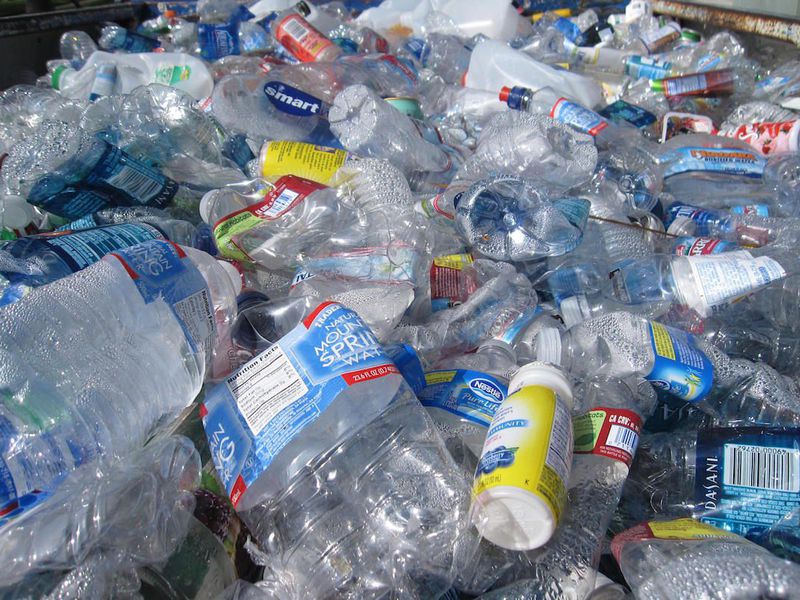Every now and then, we hear or see the news bearing some ocean animal passing away. In accordance to that, investigators and researchers are able to find different substances in the stomachs of these creatures. Just last 15th of March 2019, a beaked whale was found lying on the shores of Compostella Valley. The shocking thing about that was that about 40 kilograms of plastic waste was found in its stomach.

Why is plastic dangerous?
Other than the fact that it’s made from various chemicals which are bad for the environment, plastic can also negatively affect human health. These chemicals actually leach out of plastic and can be found in every tissue and blood of all of us.
Read: Hand Dryers Contain Fecal Bacteria, You Unkowingly Blow it All Over Your Hands
Some of the problems that plastic cause in our environment actually stem from the fact that our world is continuously regenerating. So, with some of the things that plastic has, our Earth seems to have a problem with it.
Some of the things that most of us know about this is:
- Plastic doesn’t decay easily. As a matter of fact, plastic is one of the substances which can take up to a thousand years to decay. Plastic bags we use can take somewhere from ten (10) up to a thousand years. Plastic bottles, on the other hand, can take somewhere from 450 years or more.
- If plastic burns, then the chemicals in it burn, too. Some, if not most, of these chemicals are extremely harmful to the environment.
- They’re flammable and can easily spark up when they get too close to a heat source.
- It contains Cobalt (CO); CO is a killer and if burnt, it can be drastically dangerous to our health.
These are just some of the worst things that plastic can give both to our generation and to our home. However, some people don’t think of this because plastic has a too few advantages which can be efficient for our everyday lives.
Read: Get Rid of Trash Can Smell in 10 Seconds with This Amazing Trick
Nevertheless, it’s dangerous for our health and an additive to the fact that it can take up to a hundred years for it to completely decay.
Good news! Researchers in the Philippines were able to find microorganisms which have the ability to eat plastic. Yes, plastic can now be easily removed—you don’t have to wait for more than 100 years now!
A few researchers from the University of the Philippines – Baguio, was able to discover four (4) strains of bacteria which can biodegrade low-density polyethylene or LDPE.
LDPE Is one of the more commonly used ingredient for plastic bags, shampoo bottles, cling wraps, and other containers. It’s originally and naturally highly resistant to degradation under natural conditions.
Denisse Yans dela Torre, Mari Louise Reyes, Ronan Baculi, and Lee delos Santos, were the authors of this study. Because of their mind blowing discovery, it was published in the Philippine Science Letters in the past year.
Their study unearthed a few of the known bacterial strains which were collected from different crevices of rocks of a specific Spring in Botolan, the province of Zambales. They were able to collect these strains in the Poon Bato spring—these are the strains of bacteria that are able to degrade LDPE.
Read: A Japanese Innovates Flash Drive That Uses a Small Fish’s Brain as Storage
What were the researchers able to find?
In their study and observation, they were able to determine that four (4) out of the nine (9) bacteria that they separated from the spring substantially decreased the weight of the plastic polymer they were given in the 90-day period of incubation.
In addition to this, the researchers were also able to determine that the bacteria was able to create byproducts that were friendly and safe for the environment.
The UP Vice President for Academic Affairs was proud of this discovery and is determined that this specific study will change the face of Science and decomposition.
Results revealed changes in physical structure and also chemical composition of the films. Another method which determined plastic utilization of the bacteria was the evident decrease in the weight of the films.”
Furthermore to what the UP Vice President said in their statement, together with the researchers, they explained the situation further.
Read: Surprising Things Your Urine Color Says About You
Protein analysis also indicated that bacterial cells could live and proliferate with films as the source of energy. Looking at the physical and chemical changes of the plastics before and after some time with the bacterial isolates, it was deduced that these minute organisms can possibly end plastic domination by making a meal out of it.”
The researchers had aid from other previous researches abroad which revolved around organisms which thrive and survive in different extreme conditions which has the ability to biodegrade plastics and some of its properties.
In their paper, the researchers noted that the process of degrading the LDPE can also be due to the extreme conditions like the hyperalkaline environment that they dwell on.
Although the thriving conditions can be a huge factor in this instance, they were able to locate these bacteria in Poon Bato Spring, an alkaline Spring that can be found in the province of Zambales.
The Spring does not only contain high-property alkaline, it also has Magnesium, Sulfate, Iron, Chloride, Calcium, and other more elements which are best for our environment.
Is this being spread worldwide now?
Well, as of the moment, the research group is still pushing for research for them to distinguish the population and the correct distribution of these microorganisms that degrade polymers. More so, they’re trying to locate a possible formulation or concoction of a microbial consortia—this will be more effective in the biodegrading of plastics.
They did not care less in explaining what their discovery can contribute to the Science we know now. They wrote and said that there are still ways on how we can effectively treat and resolve the plastic issue we have in our planet.
Read: Human Semen Reported to Possibly Carry at Least 27 Different Viruses
This study demonstrated the ability of the isolates to degrade polyethylene even in the absence of prior oxidation treatments. The results showed that selected microorganisms exhibited great potential for LDPE biodegradation, a discovery which can be used in reducing solid waste currently accumulating in natural environments.”
Hopefully, this discovery will soon have a conclusion. Annually, the Earth produces 260 million tons of plastic. Ten (10) percent of this end up in oceans—which is pretty evident due to the fact that thousands of deep sea creatures’ lives end because of plastic.
What can you say about this new discovery? Could this be the answer to the plastic problem we are currently facing?


